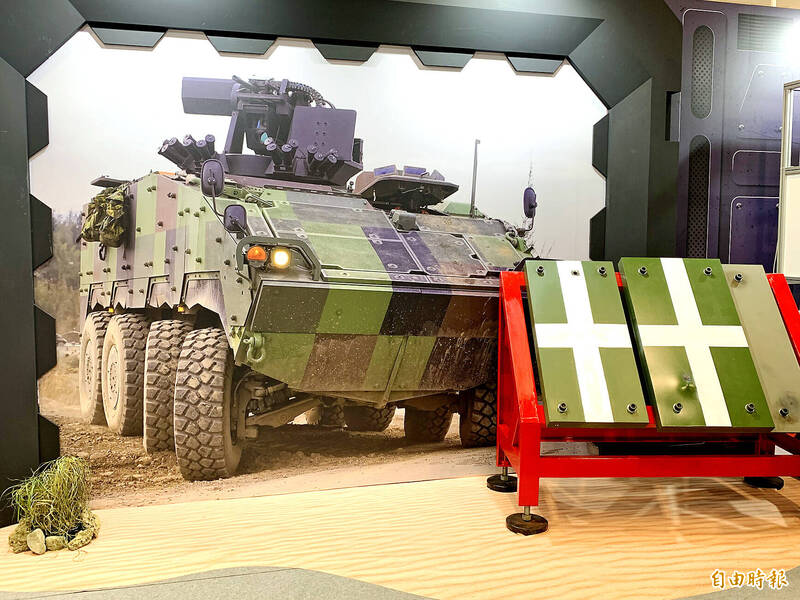《TAIPEI TIMES》 Chungshan Institute shows off defense tech

A composite armor module showing signs of a non-penetrating hit from weapons fire, front right, is pictured with an undamaged module against the backdrop of a painted CM-32 Taiwan Infantry Fighting Vehicle at the Taiwan Innotech Expo at the Taipei World Trade Center on Thursday. Photo: Chen Chih-cheng, Taipei Times
HARD HITS: The institute’s new armor appeared to have been live-fire tested with weapons more powerful than the 25mm guns the CM-32 was designed to withstand
By Chen Cheng-yu and Jonathan Chin / Staff reporter, with staff writer
The Chungshan Institute of Science and Technology has unveiled a new composite armor material and hydrogen fuel cells in a demonstration of the latest products from the Ministry of National Defense’s research and development arm.
The novel armor is to be utilized as a part of an add-on protection package for armored and soft-skinned vehicles, as well as helicopters and ships, an institute spokesperson said at the Taiwan Innotech Expo in Taipei on Thursday.
A CM-32 infantry fighting vehicle fitted with the new armor would be rated as being able to protect against large caliber weapons fire, significantly boosting the survivability of the platform and its crew, the spokesperson said.
A shell casing showcased at the exhibit suggested the institute’s live-fire trial used a 30mm chain gun, a more powerful weapon than the 25mm guns the frontal armor of the CM-32 was designed to withstand.
The armor design achieved a superior strength-to-weight ratio compared with its predecessors by replacing aluminum carbide with silicon carbide, the spokesperson said.
The protection packages can be customized to suit the user’s operational needs, they said.
The institute would not proceed with mass production of the armor until it receives interest from the armed forces, they said.
A display at the expo indicated that the armor used tiles arrayed in a honeycomb pattern between ballistic steel.
Ministry of National Defense records showed that the improved composite armor project, which cost NT$950 million (US$29.61 million), has passed operational trials and its adoption into service is pending.
The institute’s fuel cell uses a proprietary dehydrogenated powder-based technology for energy storage, enabling its use as a mobile power source, the spokesperson said.
The institute sources 80 percent of the parts for the project from domestic manufacturers, they added.
The system, which uses highly efficient hydrogen production and energy conversion, is low-cost, compact and easy to install, they said.
The technologies used in the cell have multiple potential military applications, including power generation in submarines, energy storage in uncrewed undersea vehicles and hydrogen rocket fuel manufacturing, they said.
新聞來源:TAIPEI TIMES

















